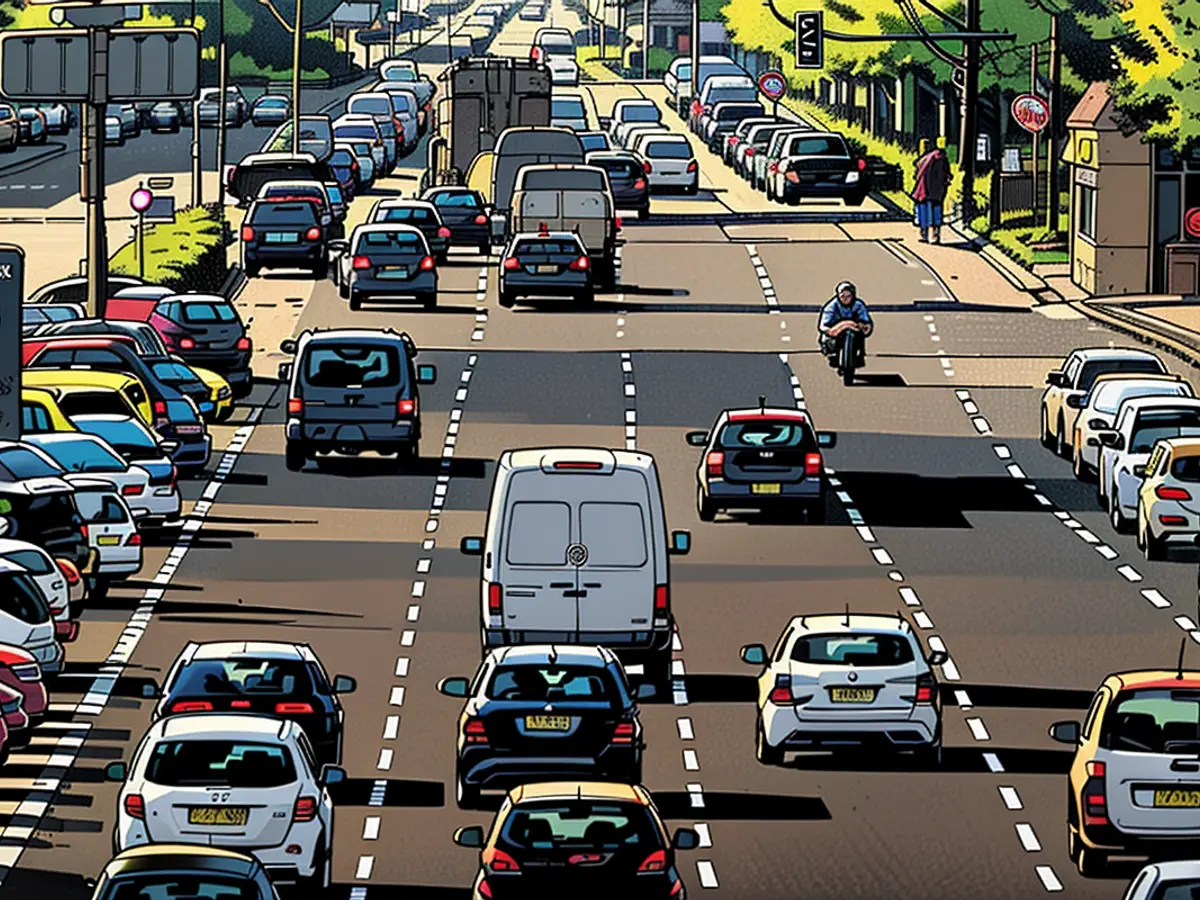The Significance of Cars Wanes, Yet Remains Indispensable in Our Lives
The Ministry of Transport's 2040 projection indicates noticeable trends. According to this, there's a rise in the transportation of goods within Germany. Passenger traffic is also projected to skyrocket. The significance of cars is waning, while two alternative modes of transport are increasing considerably.
In the foreseeable future, trucks will continue to be the primary mode of transport for goods, and cars will retain their dominance in passenger transportation. This is evident in a comprehensive transport forecast for 2040, recently released by the Ministry of Transport.
As per this forecast, road freight traffic is expected to surge by 34% over the next 15 years. While rail freight traffic will also see significant growth, only about 20% of all goods are currently transported via rail. The federal government aims to boost this proportion to a quarter by 2030.
The Ministry of Transport attributes these changes in goods transportation to the energy transition. This has resulted in a "marked decrease" in bulk and energy goods such as coal, coke, oil products, and ores. On the other hand, there's a substantial rise in goods primarily transported by road, including postal items and food and beverages.
Rail traffic sees the most growth
Passenger traffic is also projected to increase significantly - rising by 8% to surpass 1.3 billion passenger kilometers by 2040. The lion's share of this growth is attributed to rail: passenger traffic on railways is set to increase by 60% by then, while air traffic is expected to grow by 30%, but only by 1% on roads.
According to this, "cars and motorcycles remain far and away the most popular mode of transportation in Germany. Two-thirds of all journeys are made with them," the BMDV stated. "Traffic in Germany is set to increase significantly," said Transport Minister Volker Wissing. "To avoid a traffic crisis in the future, we must continue to act decisively and invest in all modes of transportation."
"The expansion of the railways must continue at full speed," explained Wissing. Simultaneously, trucks remain "the primary mode of transportation in the goods sector" and "motorized individual traffic the backbone" of mobility in Germany. Therefore, the maintenance and construction of roads are "essential."
This is the latest forecast in a decade
The transport forecast consists of various long-term scenarios that illustrate the development of transportation up to 2040 under specific conditions. The previous forecast, pertaining to 2030, was from 2014. Based on these scenarios, the federal government is now reassessing its plans for infrastructure expansion, commonly referred to as "demand plans" for the individual modes of transport (road, rail, and water).
However, this approach is criticized by numerous associations. They urge that infrastructure planning and investment be guided by political objectives rather than transportation development forecasts. "Those who consider the transport transition from the goals will take bold measures and will not hide behind predictions," said Dirk Flege, managing director of the interest group Alliance pro Schiene.
In aligning with the Ministry of Transport's 2040 forecast, the federal government aims to boost the proportion of goods transported via rail from its current 20% to a quarter by 2030. Despite this, the expansion of railways and the maintenance and construction of roads remain crucial, as trucks remain the primary mode of transport for goods and motorized individual traffic forms the backbone of mobility in Germany.
In response to the Ministry of Transport's 2040 transport policy, there's a significant projection of an 8% increase in passenger traffic, with rail seeing the most growth at 60%, while cars and motorcycles continue to dominate, accounting for two-thirds of all journeys in Germany.








